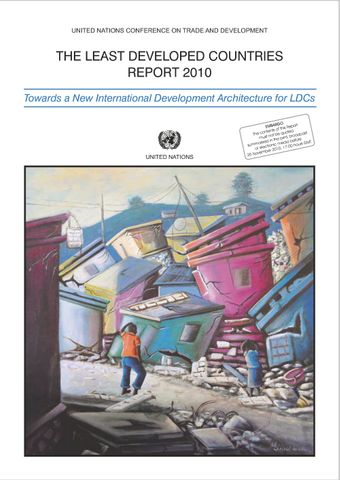The global financial crisis and recent boom-bust cycle in the LDCs

- Author: United Nations Conference on Trade and Development
- Main Title: The Least Developed Countries Report 2010 , pp 1-43
- Publication Date: February 2011
- DOI: https://doi.org/10.18356/360b3e5f-en
- Language: English French, Spanish
During the past three years, the world economy has been rocked by the bursting of a financial “super-bubble” which had formed in the aftermath of the 2001 dotcom crisis, as housing and other asset prices, all interlinked on a global scale, had become over-inflated owing to speculation, excessive leverage, loose macroeconomic policy and weak regulation. After the bankruptcy of the United States investment bank, Lehman Brothers, in September 2008, stock markets collapsed throughout the world and global financial markets froze as banks stopped lending to each other because of mutual distrust about their level of assets and liabilities. For about five months, global industrial production and trade then plummeted at rates similar to those following the Great Depression of 1929. Although since March 2009 financial markets, industrial production and trade started to recover, global output still was down by 2.2 per cent in 2009, with most countries in the world, including LDCs, experiencing an economic downturn. The United Nations, the International Monetary Fund (IMF) and the World Bank believe that global economic recovery is now under way. But the recovery is fragile and uneven, and serious downside risks remain. Moreover, analysts caution that the global financial and economic crisis is likely to have long-lasting adverse effects on actual and potential output in both developed and developing countries.
© United Nations
ISBN (PDF):
9789210550758
Book DOI:
https://doi.org/10.18356/4b5fe06b-en
Related Subject(s):
Economic and Social Development
Sustainable Development Goals:
-
From This Site
/content/books/9789210550758c006dcterms_title,dcterms_subject,pub_keyword-contentType:Journal -contentType:Contributor -contentType:Concept -contentType:Institution105
/content/books/9789210550758c006
dcterms_title,dcterms_subject,pub_keyword
-contentType:Journal -contentType:Contributor -contentType:Concept -contentType:Institution
10
5



